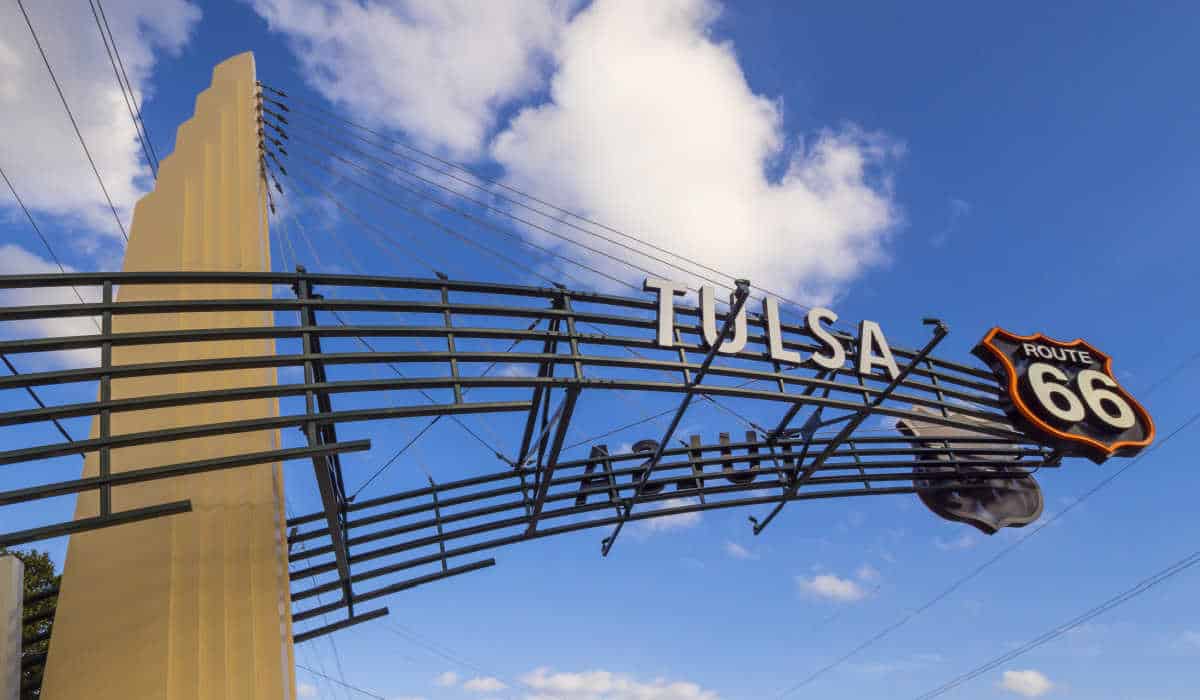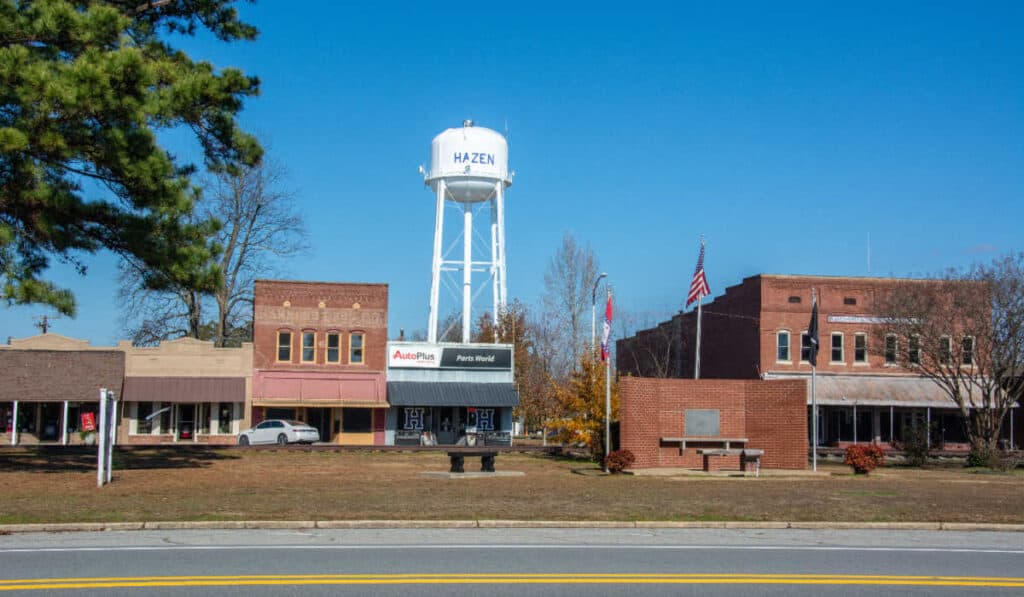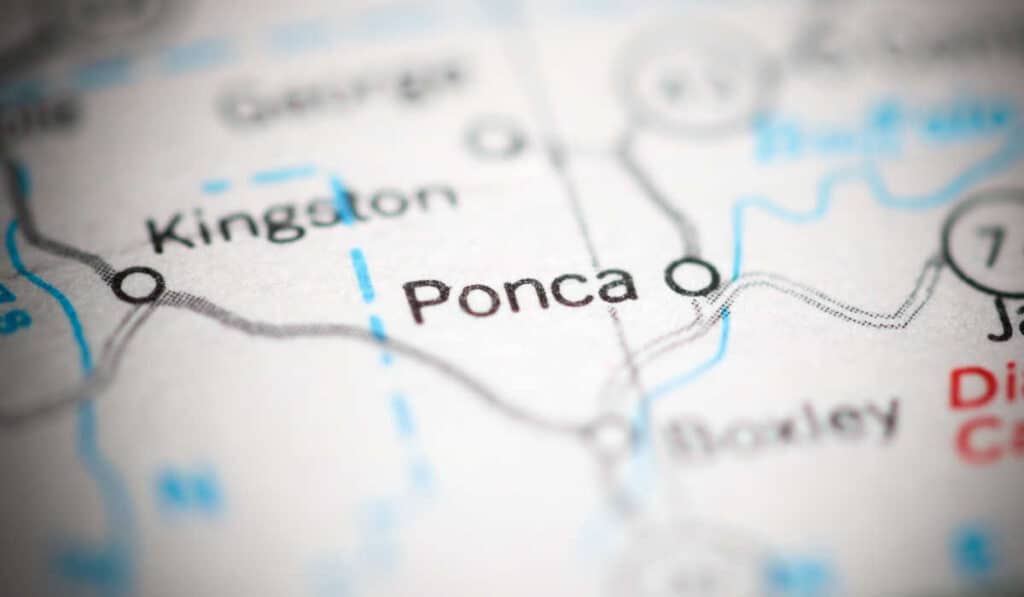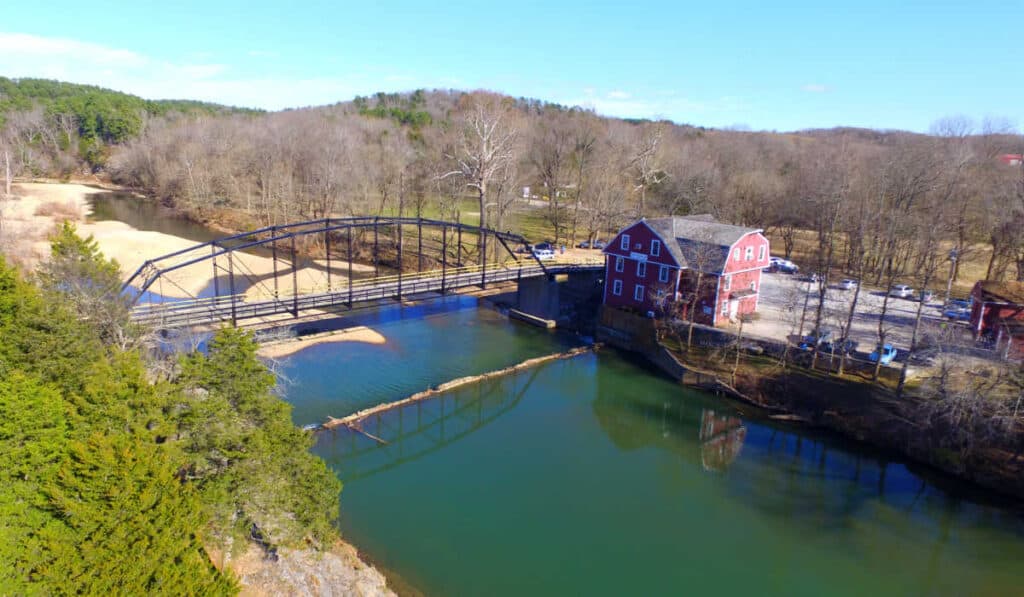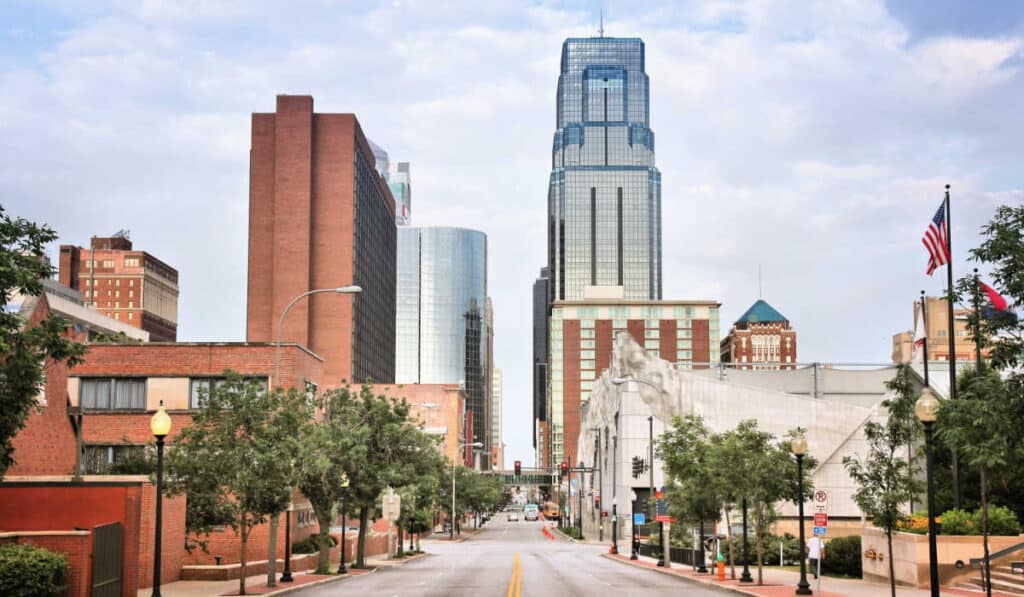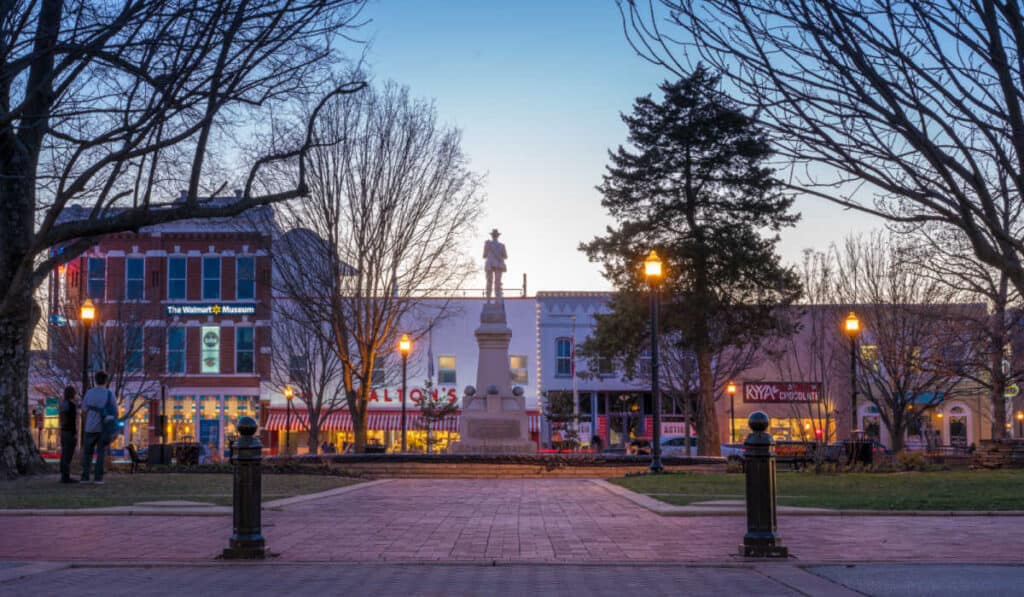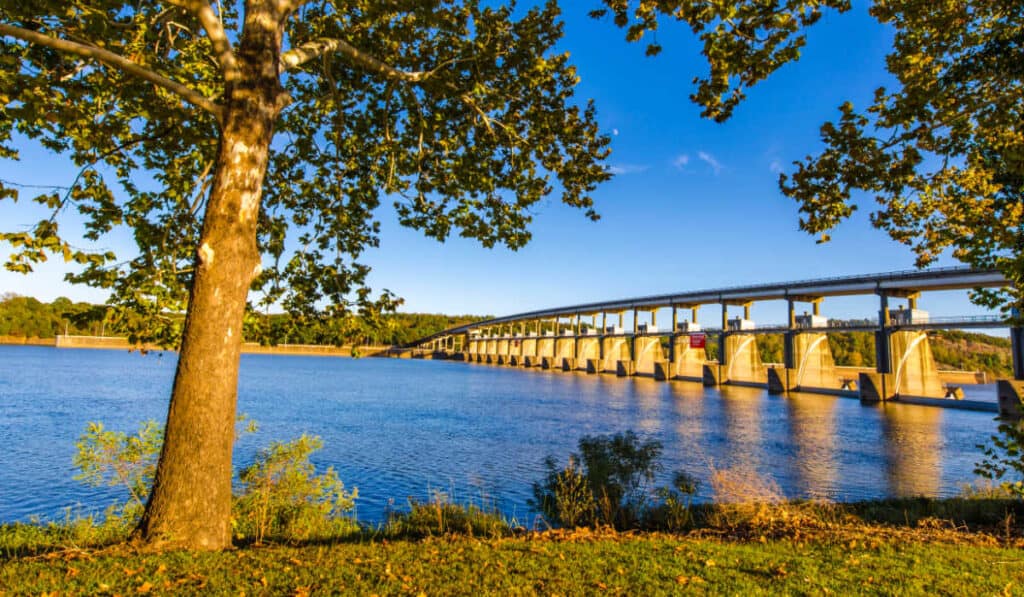Tulsa, Oklahoma, a vibrant city with a rich history, is known for several unique aspects that make it stand out as a prominent American destination. One of its most famous attributes is its well-preserved Art Deco architecture, which can be seen in many of its historic buildings, showcasing the city’s artistic flair and dedication to preservation.
This city also earned the title of the first Oil Capital of the World, thanks to the significant role it played in the oil production industry during the early 1900s. Although Houston eventually took over this title, Tulsa’s history is still deeply connected to its oil roots, which can be seen in its various oil-related attractions and landmarks.
Moreover, Tulsa is recognized for its big-booted performing arts scene and Oklahoma-style barbecue joints, which contribute to the city’s unique cultural identity. Also known as the birthplace of the iconic Route 66, Tulsa’s reputation encompasses a blend of historic charm and modern entertainment, making it a fascinating destination for visitors and residents alike.
History
Settlement and Indian Territory
Tulsa, Oklahoma, originated in 1836 as a settlement of the Lochapoka Band of Creek Native American tribe. The Creeks were removed from their ancestral homes in Georgia and Alabama and settled in present-day Tulsa after negotiating a treaty with the Cherokee and positioning the boundaries between the Creek and Cherokee nations. The area was initially part of the Cherokee and Osage nations, but the Creek tribe negotiated with the Cherokee for the area that would become Tulsa.
Oil Boom and Growth
In the early 20th century, Tulsa played a significant role in the American oil industry. The city earned the nickname “Oil Capital of the World” due to its importance as a hub for oil production and trade. The discovery of oil in nearby Red Fork in 1901 and Glenn Pool in 1905 initiated the mid-continent oil and gas boom, leading to substantial growth in Tulsa’s population and economy. White settlement in the area began after the arrival of the St. Louis-San Francisco Railway in 1882, which further fueled Tulsa’s development.
Tulsa Race Massacre
One of the darkest events in Tulsa’s history was the Tulsa Race Massacre, which occurred in 1921. At the time, the district of Greenwood in Tulsa was known as “Black Wall Street” due to its thriving African American community. The massacre began as a result of racial tensions and resulted in the destruction of the Greenwood district, including the burning of over 1,200 homes and the death of an estimated 100-300 African Americans. This tragic event is an important part of Tulsa’s history and a reminder of the racial injustices that existed in the United States during that time.
Geography and Climate
Location and Topography
Tulsa is located in northeastern Oklahoma, within Tulsa County, and lies along the Arkansas River. The city is surrounded by gentle hills that stretch toward the Ozark foothills, providing a picturesque landscape.
Climate
Tulsa experiences a humid subtropical climate characterized by hot summers and mild winters. The average summer temperature hovers around 87°F (30°C), while the average winter temperature is around 47°F (8°C). Sunshine is abundant throughout the year, with the city receiving an average of over 2,400 hours of sunlight each year.
Tornadoes
Tulsa is situated in an area known as “Tornado Alley,” making it susceptible to tornadoes during the storm season. The city has experienced several significant tornado events in its history, causing notable damage and impacting residents. It’s important for those living in or visiting Tulsa to stay informed about weather conditions and take necessary precautions during tornado season.
Economy
Oil Industry
Tulsa, Oklahoma has long been known for its oil industry and was once referred to as the “Oil Capital of the World.” The city’s rich petroleum history dates back to the early 20th century, with drilling and production playing significant roles in its growth. Even today, the oil industry remains an important aspect of Tulsa’s economy.
Diversification and Growth
Over the years, Tulsa has diversified its economy to reduce dependence on oil. The city has become a hub for aviation, with aerospace manufacturing and research being major industries. Moreover, the telecommunications and technology sectors have expanded, making the city a regional center for these industries.
Another key growth factor for Tulsa has been the strategically significant Arkansas River Navigation System. The system includes the Port of Catoosa, one of the largest inland ports in the United States, supporting trade and commerce across the region.
Tulsa’s economic growth has also been boosted by various initiatives, such as the George Kaiser Family Foundation‘s investments in the city’s community and infrastructure.
With a strong blend of traditional industries, like petroleum and manufacturing, and expanding sectors, such as technology and aviation, Tulsa’s economy continues to evolve and adapt to changing global trends.
Arts and Culture
Museums and Cultural Institutions
Tulsa is home to a variety of noteworthy museums and cultural institutions, showcasing different aspects of art, history, and culture. The Gilcrease Museum is known for its extensive collection of American art and artifacts, enlightening visitors on the history of the Americas. The Philbrook Museum of Art houses an impressive collection of European, American, and Native American art within a beautifully landscaped Italian-style villa. The Woody Guthrie Center is dedicated to the life and legacy of the legendary folk singer and serves as a hub for musical performances and educational programs.
Tulsa also holds strong ties with African American history at the Greenwood Cultural Center, which focuses on the city’s vibrant community while commemorating the tragic history of the Tulsa Race Massacre. The Union Depot is a historical railway building, now converted into a multi-purpose event space that highlights the city’s industrial past.
Performing Arts
The city showcases its cultural flair and commitment to the arts through various organizations and performance spaces. The Tulsa Performing Arts Center acts as a focal point for the city’s performing arts scene and hosts a wide array of events, including ballet, opera, and theater productions. The Tulsa Ballet is renowned for its performances and world-class dancers who bring classical elegance and modern innovation to the stage.
The presence of the Tulsa Opera offers an opportunity for audiences to experience exceptional opera productions featuring talented artists that contribute to the city’s artistic richness. Local venues and organizations support a thriving music scene that spans various genres, including popular native artists like Garth Brooks, who hails from Tulsa.
Literature and Music
Tulsa’s literary and musical heritage is intricately woven into the cultural fabric of the city. The Tulsa Tribune once served as one of the key newspapers in the region, shaping public discourse and understanding of the area’s unique culture. Woody Guthrie, a prominent figure in the city’s music scene, has had a profound influence on modern folk music, inspiring generations of musicians.
In conclusion, the arts and culture scene in Tulsa, Oklahoma is abundant with history, talent, and creativity. Through its museums, cultural institutions, performing arts venues, and celebration of both literature and music, Tulsa continues to foster an environment in which the arts can thrive.
Architecture and Landmarks
Tulsa, Oklahoma is known for its beautiful architecture and unique landmarks. With a wealth of historic buildings and attractions, the city’s blend of architectural styles offers visitors a glimpse into its rich history.
Art Deco Buildings
Tulsa is famous for its well-preserved Art Deco architecture, with numerous buildings designed in this distinctive style. The city boomed during the 1920s and 1930s, an era when the Art Deco style was at its peak. This period not only reflects the prosperity of the oil business at the time but also showcases Tulsa’s commitment to preserving its architectural heritage.
Unique Landmarks and Attractions
In addition to its Art Deco buildings, Tulsa boasts a variety of unique landmarks that make it stand out. These include:
- The Golden Driller: Located at the Tulsa Expo Center, this 76-foot-tall statue of an oil worker is a symbol of the city’s oil history and an iconic attraction.
- Center of the Universe: Situated downtown, the Center of the Universe is a mysterious acoustic anomaly where sounds seem to be amplified and bounce back to the listener. This peculiar spot offers a bit of fun and intrigue for visitors.
- BOK Center: Designed by world-renowned architect César Pelli, this modern arena hosts major concerts and events. Its curved, glass facade is an architectural marvel and has become an iconic part of the Tulsa skyline.
- Meadow Gold Sign: A restored vintage neon sign originally installed in the 1930s, it serves as a reminder of the city’s past and its connection to Route 66.
- The Blue Whale of Catoosa: Just a short drive from Tulsa, this quirky roadside attraction along Route 66 is a wooden blue whale structure surrounded by a pond, making it a popular stop for travelers and families.
With its striking array of architectural styles and unique attractions, Tulsa offers visitors an opportunity to immerse themselves in the city’s past, present, and future.
Education
Tulsa, Oklahoma is known for its educational opportunities, particularly in higher education. The city is home to a few well-established universities and colleges that offer a diverse range of programs for local and international students.
Universities
University of Tulsa: Founded in 1894, the University of Tulsa is a private institution that has a total undergraduate enrollment of 2,728 as of fall 2021. The university offers a city setting with a campus size of 209 acres. It is well-regarded for its programs in engineering, business, and the liberal arts. The University of Tulsa’s sports teams compete at the NCAA Division I level.
Oral Roberts University: Another important institution in Tulsa is Oral Roberts University, a private, Christian liberal arts institution. Established in 1963, the university provides a variety of undergraduate and graduate programs with a particular emphasis on spiritual growth and development. Oral Roberts University also has sports teams that participate in the NCAA Division I level.
Colleges
In addition to prominent universities, Tulsa is home to a variety of colleges that offer specialized programs and degree options. These institutions provide essential support to the local community, helping to shape the workforce and contribute to the city’s economy. Students in Tulsa have access to a diverse range of educational opportunities, ensuring a well-rounded experience in higher education.
Parks and Recreation
Parks and Green Spaces
Tulsa, Oklahoma, boasts a variety of parks and green spaces for residents and visitors to enjoy. One of the city’s most notable parks is The Gathering Place, a unique riverside park featuring various attractions for all ages, including playgrounds, gardens, and sports courts. It is a popular destination for community events and outdoor entertainment.
Another significant park in Tulsa is the Turkey Mountain Urban Wilderness, spanning over 300 acres. This park offers numerous trails for hiking, biking, and enjoying nature, making it a haven for outdoor enthusiasts. Additionally, the Arkansas River Trails is a system of trails along the riverbanks, providing scenic routes for pedestrians, cyclists, and anglers alike.
The Tulsa River Parks system is a collection of parks, trails, and recreational spaces along the Arkansas River. It features attractions such as the Gathering Place and the Turkey Mountain Urban Wilderness, providing diverse activities for people with various interests.
In summary, Tulsa, Oklahoma, is known for its beautiful parks and green spaces that cater to a wide range of outdoor activities. Some of the city’s most popular parks include The Gathering Place, Turkey Mountain Urban Wilderness, and Tulsa River Parks, all offering unique experiences for visitors and locals to enjoy.
Demographics and Population
Tulsa, Oklahoma has a diverse population. According to recent estimates, the city has a population of around 408,956, making it the second-largest city in Oklahoma and the 48th largest city in the United States.
The city’s racial composition includes various ethnic groups:
- African American: 15.6%
- Native American: 5.3%
- Asian American: 2.3% (consisting of 0.5% Indian, 0.4% Vietnamese, 0.3% Chinese, 0.2% Hmong, 0.2% Korean, and 0.2% Burmese)
- Native Hawaiian and Other Pacific Islander: 0.1%
- Some other race: 8.0%
- Two or more races: 5.9%
Tulsa is situated on lands that historically belonged to various Native American tribes, including the Chickasaw, Choctaw, Muscogee, and Seminole. The city has a strong presence of Muscogee (Creek) people, who were forcibly relocated to the area during the 19th century under the Indian Removal Act.
Oil was discovered on lands owned by members of the Osage Nation in the early 1900s, which led to rapid growth and industrialization. Today, the city continues to experience development and expansion, with a growing population and a diverse economy.
Tulsa is also well-known for its connection to Route 66, a historic highway that played a significant role in the westward expansion of the United States during the 20th century. This iconic roadway has been immortalized in popular culture and remains an important symbol of American history. Today, visitors can still experience the nostalgia of Route 66 in Tulsa through various landmarks, museums, and souvenir shops.
Food and Dining
Tulsa, Oklahoma is a city with a diverse and thriving dining scene, reflecting its rich history and cultural influences. Visitors and residents alike can enjoy a wide range of cuisine options, from classic American fare to international delicacies.
One of the well-known restaurants in Tulsa is Sisserou’s, which offers a taste of the Caribbean with dishes like oxtail, coconut shrimp, pork tenderloin, and jerk chicken. Kilkenny’s Irish Pub is another popular dining destination, serving a mix of American and Irish cuisine in a lively atmosphere.
Tulsa is also home to Jamil’s Restaurant, a longstanding steakhouse that opened in 1946. With a reputation for quality steaks and unique dining experiences, it remains a favorite amongst locals and visitors.
When it comes to bread, Tulsa has its fair share of bakeries and cafes offering a variety of freshly baked goods. Sourdough, artisanal loaves, and baguettes can be found in many local bakeries throughout the city. These establishments often source their ingredients locally, ensuring high-quality and fresh products for their customers.
Foodies who prefer to explore the tastes of different cultures can find a wide range of international cuisine options in Tulsa. From Asian fusion to Mexican dishes, the city’s dining scene offers something for everyone. Additionally, Tulsa’s food trucks provide a unique and convenient way to try various dishes on-the-go, making it easy to sample a variety of flavors.
In recent years, Tulsa has seen a growth in farm-to-table restaurants and eateries focusing on locally sourced ingredients. These establishments not only serve up delicious and fresh meals but also support the local economy and showcase the best of Oklahoma’s agriculture.
In summary, Tulsa, Oklahoma offers visitors and residents a diverse and delicious dining scene, showcasing a mix of traditional American fare and international cuisines. Along with its wonderful restaurants and bakeries, the city’s focus on locally sourced ingredients and farm-to-table dining options make it a true food lover’s destination.
Transportation
Tulsa, Oklahoma, is known for its efficient transportation networks, offering a range of options to residents and visitors. The city boasts a well-designed system of highways, thoroughfares, and public transit. A key part of Tulsa’s highway network is US-75, which connects downtown’s inner-dispersal loop to major interstates like I-44 and I-244.
Public transportation in Tulsa is primarily facilitated by Tulsa Transit, providing a reliable bus network throughout the city. Given itsefficient planning, the city ranks among the top 20 “Most Drivable Cities in the U.S.” by Wallethub in traffic and infrastructure. Driving is the preferred mode of transportation for most Tulsans, as nearly any part of the city can be reached within a 15-20 minute commute.
In addition to its roads, Tulsa also has a connection to the Arkansas River Navigation System, which links Tulsa to the Mississippi River through a system of locks and dams. This inland waterway system boosts Tulsa’s economy by providing a crucial transportation route for goods, such as agricultural products and industrial materials, thus linking the city to both domestic and international markets.
The presence of the historic Route 66 further emphasizes the significance of transportation in Tulsa. Running through the entire length of the city, this iconic highway serves as a symbol of Tulsa’s history and its role in American culture.
Tulsa’s strategic transportation networks have bolstered its reputation for accessibility and connectivity, making it a prime destination for business, tourism, and comfortable living.
Symbols
Tulsa, Oklahoma, is known for various symbols that represent the city’s rich history and cultural heritage. One significant symbol for Tulsa is its flag. Adopted in 2018, the Tulsa flag features a white shield at the center to represent the Native American tribes, surrounded by three gold stars symbolizing the Thlopthlocco, Osage and Creek tribal nations. The horizontal blue band at the top represents the Arkansas River, while the bottom red band stands for the lives lost during the 1921 Tulsa Race Massacre.
The City of Tulsa seal is another important emblem. It consists of an inner circle, which features a gear symbolizing industry, a handshake representing friendship, and a feather paying tribute to the Native American heritage. The outer circle contains the words “City of Tulsa, Oklahoma” and the year the city was incorporated, 1898.
Tulsa is often referred to as the “Oil Capital of the World” due to its vital role in the early 20th-century oil industry. This nickname has become an enduring symbol of the city’s economic prominence during that era. Several oil-related landmarks, such as the Golden Driller statue, still stand tall across Tulsa, reminding residents and visitors of the city’s historical significance in the oil and gas industry.
The name Rogers also holds a special place in Tulsa’s history. Will Rogers, the city’s most renowned native son, was a legendary American humorist, actor, and writer. His legacy lives on through the Will Rogers World Airport, the Will Rogers Memorial Museum, and various other establishments named in his honor.
Lastly, the Muscogee (Creek) Nation is an essential part of Tulsa’s identity. The city falls within the jurisdiction of this federally recognized Native American tribe, which contributes significantly to the region’s culture, history, and economy. The Muscogee (Creek) Nation’s influence can be seen in various cultural events, educational programs, and community initiatives throughout the Tulsa area.
Miscellaneous
Tulsa, Oklahoma, proudly showcases its unique blend of history and modernity, evident in its diverse districts and skyline. One interesting part of Tulsa’s identity is its curious street-naming system. Instead of standard names, Tulsa opted to name its streets after other cities in North America. This reflects Tulsa’s desire to leave its mark on the world.
The city is also recognized for its vibrant Greenwood District, historically known as “Black Wall Street”. This area was once a prosperous community for African Americans during the early 20th century. Although the district faced a tragic history during the Tulsa Race Massacre, it has been revitalized and stands as a symbol of resilience and cultural pride.
Tulsa was known as the “First Oil Capital of the World”, playing a central role in the oil industry during the early 1900s. As a result, the skyline is dotted with grandiose Art Deco architecture, reflecting the city’s oil boom legacy.
Moreover, Tulsa boasts over 140 parks, earning it the nickname “Green Country”. This green zone offers residents and visitors an abundance of outdoor recreation opportunities, such as the Gathering Place, a sprawling 100-acre park along the Arkansas River.
The city’s diverse districts cater to different lifestyles and interests, from the trendy Brookside District, with its lively dining and shopping scene, to the Tulsa Arts District, home to a multitude of galleries, theaters, and museums. These districts come together to form an intricate tapestry that makes Tulsa a unique and exciting destination.

